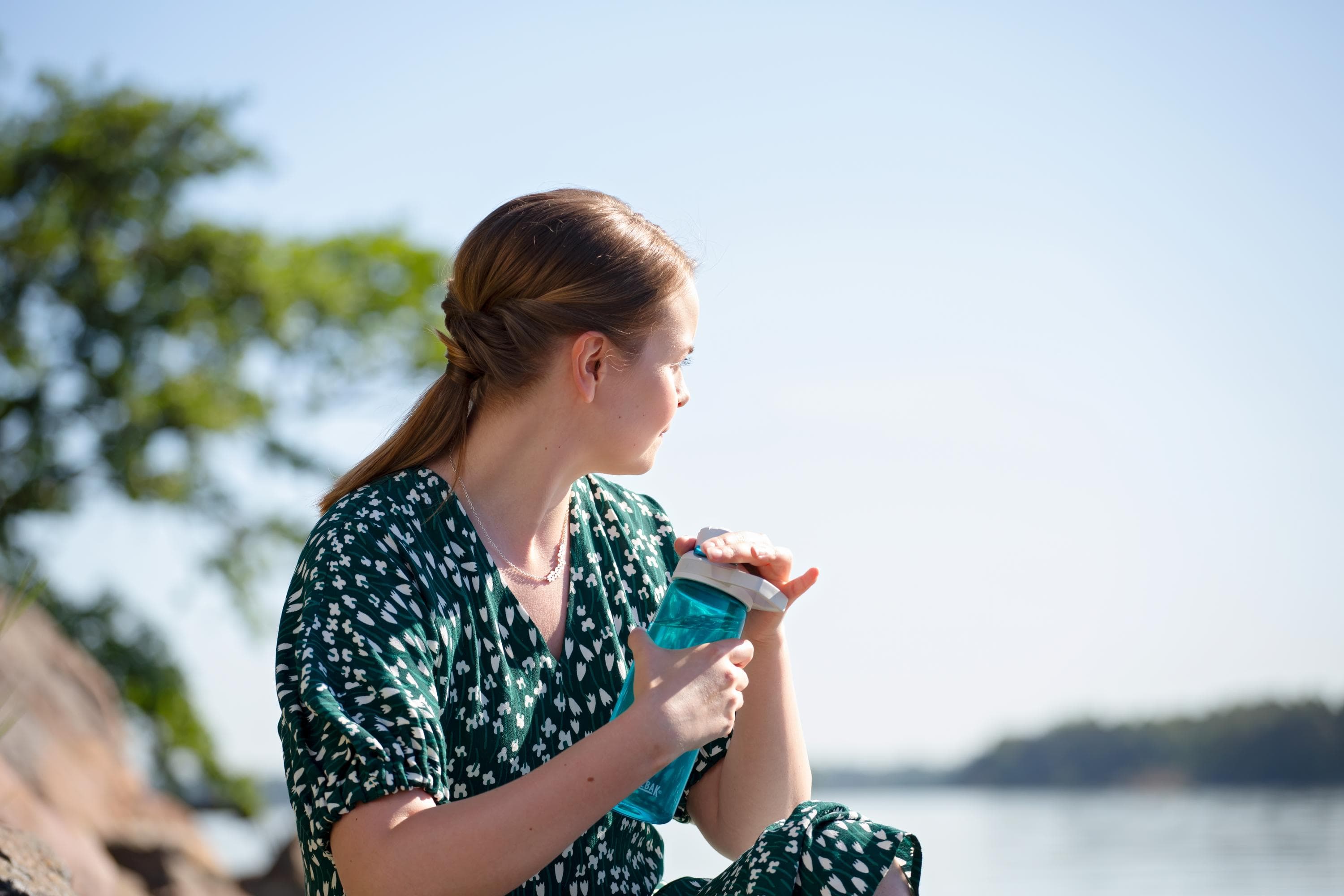
Hikers need enough clean water
When you are out hiking, it is important to drink plenty of water. If you do not drink enough you will feel more tired and, in the worst case, this will lead to dehydration, which can be harmful to your health.
An adult normally needs around 2.5 litres of fluids every day. We usually get about one litre of fluids in food and 1.5 litres by drinking. Hot air and heavy exertion increase the body’s need for fluids. Your daily need of fluids may be considerably higher than this when hiking.
When you feel thirsty and your mouth is dry, you are already dehydrated. Starting in the morning, drink regularly during and between meals. In hot weather, it is a good idea to drink a small amount of water every 10-15 minutes. Always keep the water bottle within reach so that you will automatically take sips. When drinking is part of your routine, you won’t forget about it and suddenly find yourself dehydrated.
The most common symptoms of dehydration are thirst, nausea, headaches, muscle cramps, reduced urine output and dark-coloured urine.
Also ensure sufficient fluid intake in cold weather. In the winter, it is difficult to melt snow into water, so it is easy to drink too little. Exerting yourself in warm clothes causes you to sweat and lose moisture, so take off layers as you move. In the winter, keep drinks in a thermos bottle so that they will not freeze. In winter, hikers need to drink at least one litre of warm fluids per day. Drinking cold water consumes energy and cools the body.
On hikes you usually carry drinks in a bottle or flask. The bottle should be clean when filling to prevent any bacteria present from growing. Always rinse your drinking bottle when filling it and wash it daily.
Drinking water is best kept in a cool and dark place. The water will remain potable for 3-5 days. Also pack an extra metal water bottle for a longer hike. In this case, you can boil all the hot water needed for cooking and dishwashing in one go and then store it in the bottle for later use.